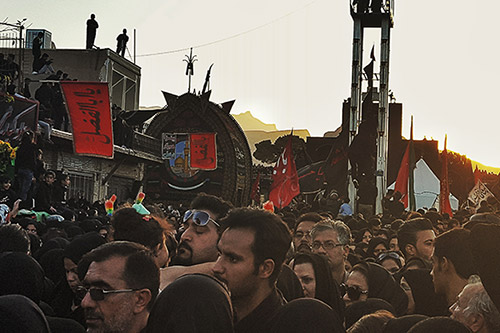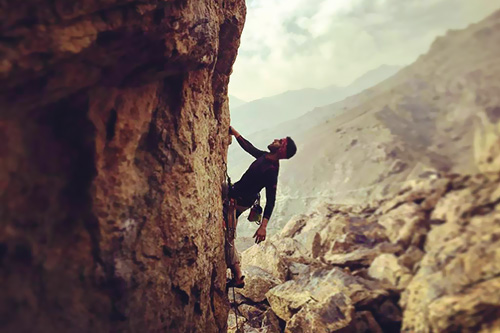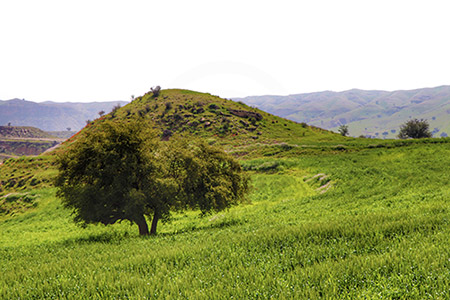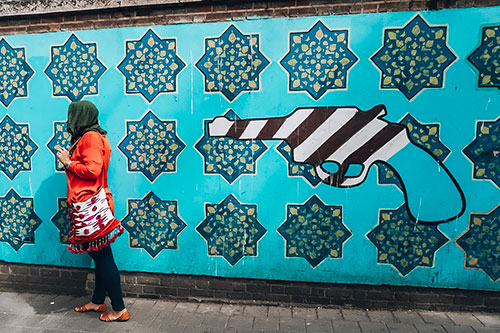 Signin with Google
Signin with Google Signin with Facebook
Signin with Facebook
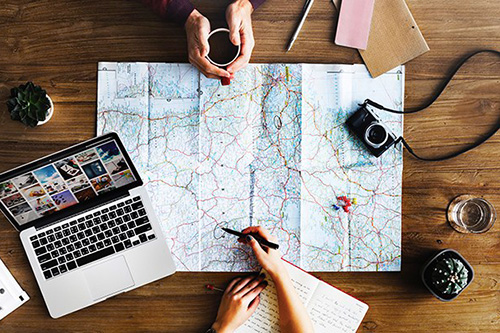 About Iran,Before Traveling
About Iran,Before TravelingTop Experiences You Should not Miss While Visiting Iran
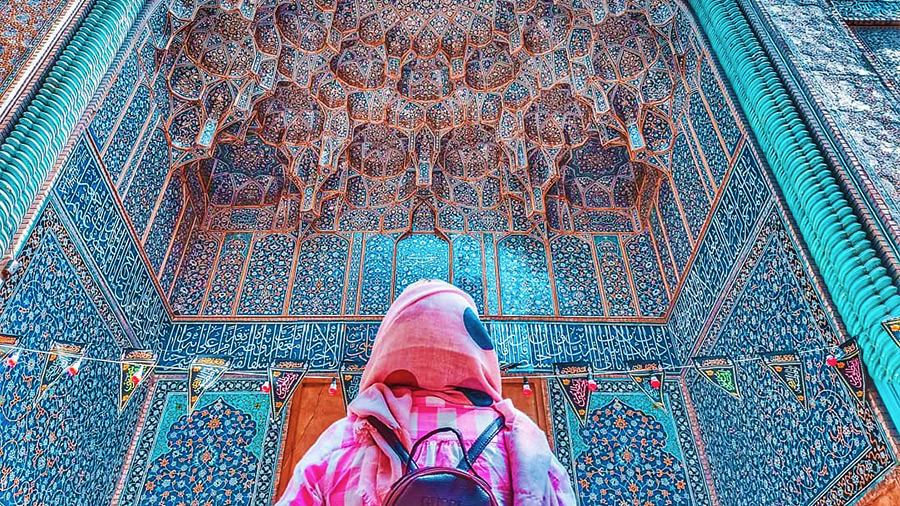
Iran has so many wonders to offer the traveller! From the mysterious charm of its ancient sites to its warm-hearted people, Iran is not just a country to visit, but more readily a place to experience! As you'll start discovering the country, you'll soon realize that it's not only one of the safest places to travel, but it also has an endless variety of activities to enjoy. Here are the top experiences you should not miss while travelling to Iran. You can book and join Iran tours and experiences on the Iran experiences page.
Culture and History Experiences
1. Meet and live with the people of Iran
Without a single doubt, the most striking and lasting memories of your trip to Iran will be your encounters with its people. Iranians are undoubtedly among the most hospitable people in the world. They make a point of welcoming travellers as if they were part of the family: wherever you'll go, people will start chatting with you, being curious about your opinion on their country, eager to offer you a tea, and even invite you over to share a homemade family dinner, in the purest Persian tradition.

2. Explore Isfahan, the jewel of Islamic architecture
At the first evocation of Iran, the wonders of Isfahan immediately come to mind and it's not without reason that the city is known as "half of the world". One could spend hours on Naghsh-e Jahan square, which gathers the most sumptuous buildings in the Islamic world. On one side, the Sheikh Lotfollah Mosque shines with the magnificence of its marble walls and seven-coloured tiles. Facing it stands the gorgeous Ali Qapu palace, next to the masterpiece of Iranian architecture: the Masjed-e Shah, with its unique turquoise-tiles dome and spectacular minarets. Wandering into the alleys of the picturesque bazaar, listening to the singers under the arches of one of the many bridges... will feel like time has stood still.

3. Persepolis, Naqsh-e Rustam, and Pasargadae: a journey through time in the great Persian Empire
Iran has once been the centre of the known world, during the reign of the Achaemenids who established their capital in Persepolis. There, in the middle of a dry and dusty landscape, raises the Gate of All Nations. In the blink of an eye, you will be transported centuries ago, wandering among the ruins of this once-majestic palace, listening to the stories recounted by the carved bas-reliefs. Go back even further in time to Pasargadae, where Cyrus the Great, the founder of the Persian Empire, lies for eternity in the quietness of his sepulchre. Do not miss the gigantic Sassanid tombs carved into the stone at Naqsh-e Rustam, a must-see of Persian history.

4. Taste Persian food, so much more than Kabab
Those who are not familiar with Persian food generally assume it to be limited to barbecue meat, and probably too hot and spicy. It can't be more wrong! Persian dishes are numerous, each region having several specialities made from local and diverse ingredients. That's what makes Iran a perfect destination for foodies! Travel to Shiraz to taste the typical "Kalam Polo", rice cooked with fresh herbs and small meatballs; go north to Gilan to enjoy the best-roasted eggplants ever with "Mirza Ghassemi"; or head toward the south to eat a "Ghalyeh Mahi", a stew cooked with fresh fish directly coming from the Persian Gulf. You'll soon realize that Persian food is both sophisticated in taste and comforting like mom's cooking.

5. Live with nomads of Zagros
Did you know that Iran has a few dozens of nomadic tribes, from diverse ethnicities? Still nowadays, when comes the first days of spring and autumn, these 1,5 million people travel with their goats and sheep in search of pasture. Visit the Zagros Mountains, just a few hours' drives from Shiraz, to share the daily life of Qashqai nomads during their migration. It's an invaluable opportunity to understand Iran's nomadic culture and traditions, whose legacy is slowly fading away with modern life. Sharing nomad's everyday life, you'll experience a self-sufficient lifestyle, getting water from the river and food from the flocks, as well as packing each morning to go camping each evening in a different environment.
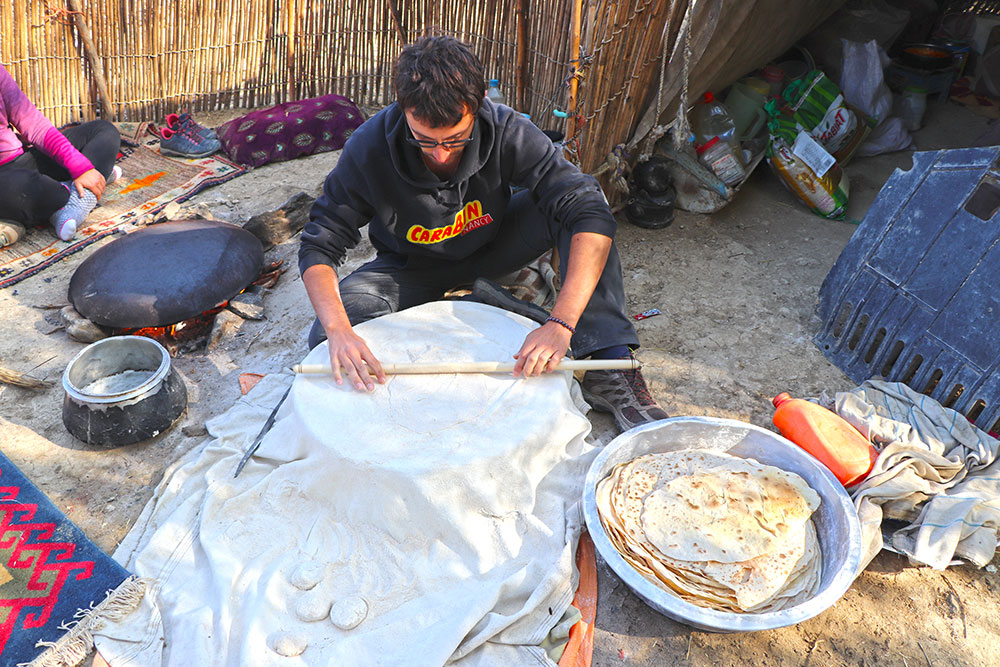
6. Explore Yazd, the fairyland desert city
The city of Yazd appears as a pure daydream to the traveller, straight out of the 1001 night’s tales. There is something magical to getting lost in the maze of its narrow ochre streets, where shadows and sunlight play hide-and-seek with the visitor. No wonder it's often the favourite city of travellers. Its amazing wind catchers, the "bâdgir", spread here and there in the city surely add to its charm. And when the night comes, sitting on one of its many rooftops to admire the lights over the Jameh mosque, will forever stay vivid in your memory.

7. Tehran, an unexpected city to discover
The Iranian capital is often misunderstood by travellers, who skip it too quickly. What a shame! Tehran has a rich life to discover if you take the time to look behind the curtain. The eight million inhabitants city is home to a rich artistic and creative life with many art galleries. Most of the time, you won't even have to enter a museum to admire the creativity of Iranian artists, whose sculptures and street arts adorn Vali Asr street, the longest avenue of the Middle East. Then, sit down in one of its amazing cafes, whether it's an intellectual book cafe where young Tehranis reinvent the world or a sophisticated address of the fancy North Tehran. The best way to take the pulse of the city remains to admire it on top of the modern Milad Tower, walking over the graceful Tabiat Bridge, or simply admiring the Azadi Tower, its most famous landmark. Aside from its modern life, discover the old Tehran: Its otherworldly bazaars and narrow streets.

8. Bazaar shopping, the ultimate Iranian experience
What can better describe Iran than its colourful bazaars? The former Persian Empire, located in the middle of the Silk Road, count many historical bazaars. Nowadays, it's still the favourite shopping place for most Iranians, as you can find anything. There, you will see ancient jobs and craftsmen practising their traditional knowledge, on carpets, wood or tiles. The best way to visit is to get lost in these covered lanes, which connect old caravanserais, mosques, and public baths turned into teahouses. All your senses will be aroused while admiring the mesmerizing architecture of the domed ceilings in Qazvin. Fresh vegetables, local delicacies, and traditional drinks, as well as all sorts of handicrafts, are just there waiting for you to discover in Isfahan or Shiraz. Not to mention the UNESCO-listed bazaar of Tabriz, the largest covered bazaar in the world, or the buzzing Friday bazaar of south Tehran.

9. A guide to the Zoroastrian life and traditions
Zoroastrianism is one of the world's oldest religions, which appeared in Persia way before the Muslim conquest. Nowadays, Iran is still home to many of its followers and hosts many important sites such as the Fire temples and the Towers of Silence. Most of them can be found in Yazd's region, such as in the village of Chak Chak. Often located in remote areas in nature, they offered stunning views alongside their spiritual and peaceful atmosphere. Learning about the rituals and culture of Zoroastrianism will tell you a lot about Iran, which many of its traditions, such as the New Year, are rooted in this ancient religion.

10. Participate in local events and Persian celebrations
Have you ever heard about the haft sin table? Did you know that saffron is harvested by hand for only a couple of weeks? And that the longest night of the year is accompanied by pomegranates and readings of Hafez's poetry? All those are traditional and seasonal Persian events, which take place all along the year. According to your date of arrival in Iran, be sure to check the local celebrations and events which take place. During "Nowruz", in March, you will see the whole country celebrating the New Year according to ancestral traditions rooted in Zoroastrianism. On "Chahar-Shanbe Suri", the evening before the last Wednesday of the year, join Iranians in the tradition of jumping over a fire. In September, do not miss the "Ashura" and "Tasu'a" religious celebrations, during the mourning of Imam Hossein. While those events are nationwide, others are also typically regional, for instance, the rose water festival in May, in Kashan. Taking part in one of them guarantees true insights into the Persian culture and unforgettable memories.

11. Visit Shush and other Unesco-listed sites of Khuzestan, to trace back old civilizations
It doesn't matter whether you're a ruins lover or not: the magnificence of those sites is beyond imagination, and they will fascinate even the trendiest visitors. In the arid Khuzestan province, close to its capital city Ahwaz, are three of the most splendid Unesco-listed archaeological sites in Iran. First, take a trip back to the third millennium BC to enter the antic city of Susa (Shush), one of the greatest of ancient Persia. Visit the remains of the Royal City, before heading toward a "masterpiece of creative genius": the Shushtar Historical Hydraulic System. This amazing piece of engineering is still functional today, sixteen centuries after its construction. Deeper in the hinterland, you will discover the ziggurat of Chogha Zanbil, the world's best-preserved example of Elamite architecture, whose serene and spiritual atmosphere will captivate you.

12. The picturesque villages of Iran, witnesses of the diverse history and culture of Iran
The best places to find tracks of Iran's diverse cultures and ethnicities lie in its villages. They are the last witnesses of several traditional lifestyles. Masuleh is probably Iran's most famous village. Located in the Gilan Province, it is known for its roofs forming part of the streets. Located in the heart of a green region, Masuleh is also surrounded by forest and waterfalls. More on the west, discover the traditional Kurdish village of Palangan or Uraman Takht stair village. Don't expect to find any souvenir shops here! On the contrary, this made out of mud-bricks village is the ideal spot to observe the local life of Kurdish people. In its preserved atmosphere, you will see women wearing colourful outfits, observe animals crossing the streets to go to the fields and discover at nightfall, some traditional Kurdish music. Go to the northwest to find the incredible troglodyte village of Kandovan, in West Azerbaijan near Tabriz. Nested in the cliffs, houses of the village were carved by men in the volcanic rocks and are still inhabited. A long way toward the southeast, the UNESCO-listed heritage is found to be more spectacular with unique culture and a semi-nomadic lifestyle preserved since 12000 years ago, Maymand stone-cave village. Tempted by a dive in clear waters? Reach the tiny village of Pamenar and its lake, in Khuzestan, to find yourself in the quietness of an oasis of greens and wildlife.
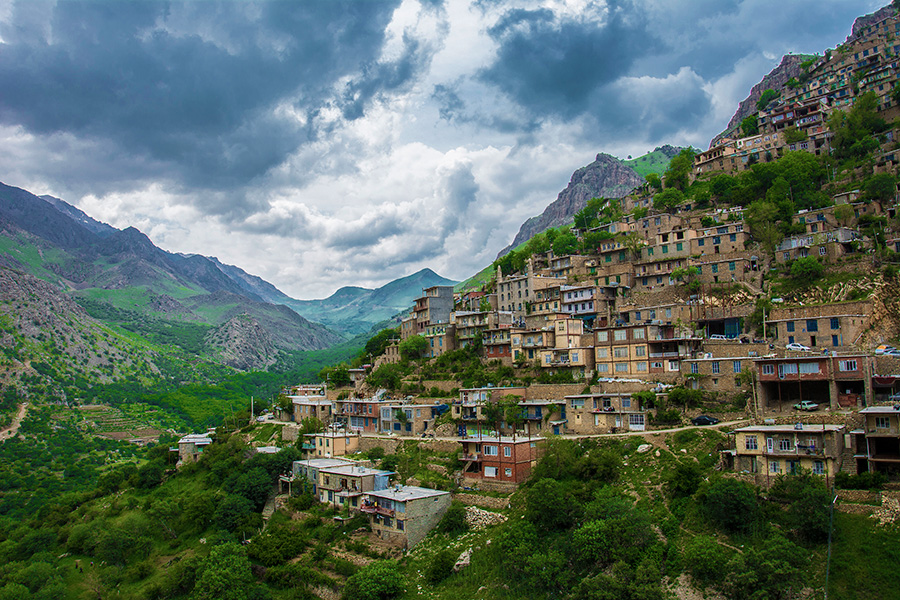
Nature and Adventure Experiences
1. Desert and oases, the profound silence experience
Close your eyes and think about Iran, the former Persian Empire. One of your first visions will certainly include endless sand dunes, palm trees and heavenly sights of oases. You are right, Iran is the land of many deserts and a perfect destination for golden sand lovers. With thousands of kilometres of sand dunes, you can easily travel to remote and preserved places. Experience staying in a local house, in the wilderness of the Maranjab desert to discover the real deep silence. Imagine the sand dunes at your doorstep, the sun fading at the horizon, and the sky full of bright shining stars. Go exploring salt lakes and camel riding in the Varzaneh desert, near Isfahan. Hold your breath in the Lut desert, to admire the massive and nature-made "sandcastles", sculpted over several meters high. This ruthless desert, a World Heritage Site, is the hottest spot on earth, with a temperature of 70°C measured.
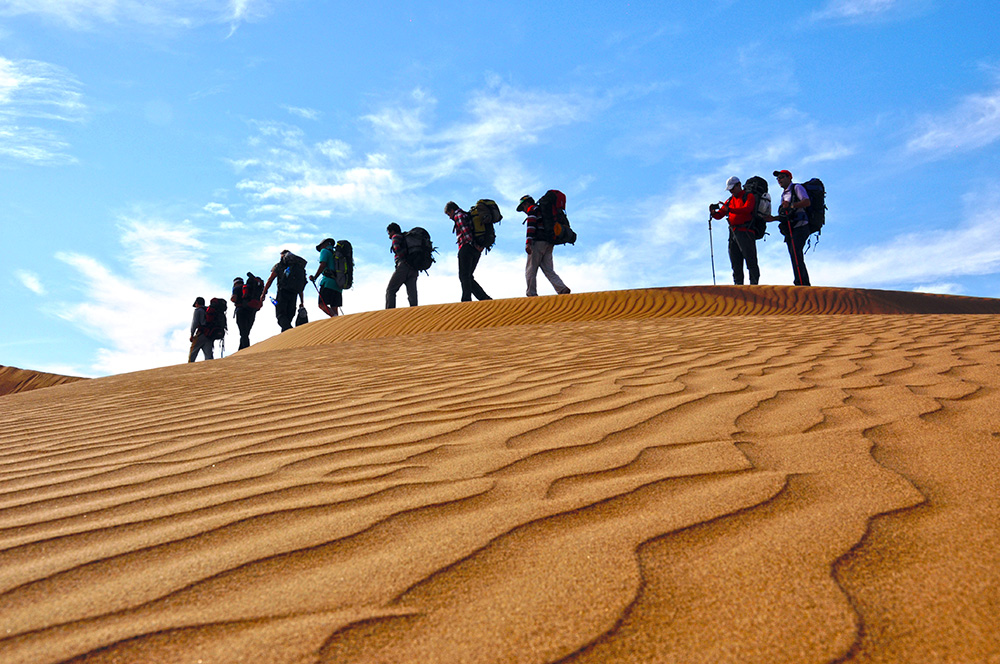
2. Ski in the Alborz Mountains and ride the virgin Persian powder
Forget the sand dunes and the merciless sun, to replace them with soft white snow powder. Yes, this is Iran too! Almost one-third of the country is covered with snow during winter, and with a hundred peaks over 4000m, Iran is a paradise for ski lovers. Ski resorts are numerous, modern and fully equipped. You can travel to the mountains of the west to enjoy the virgin powder, or simply stay in the capital city, which has the highest ski resort in the country, up to 3700 meters, in Tochal. Skiing in Iran is a combination of thrilling sensations: the pleasure of gliding down the tracks in excellent snow conditions while enjoying breathtaking landscapes. To add to the picture, you can imagine yourself enjoying a comforting warm Persian tea to get back on your feet. The ski season lasts between three to five months in Iran, during winter. After that, the mountains become the playground of climbers and hikers.

3. Conquest Mount Damavand, the heart of the Alborz mountains range
Iran's highest and most famous peak, Mount Damavand, stands proudly in the Alborz mountains range as if challenging the mountaineers to adventure themselves and brave the elements. With a height of 5609 meters, mount Damavand is little known outside of Iran. However, it's nothing less than the highest volcano in Asia and the second most prominent peak in Asia after Mount Everest. But don't be scared! Along with an experienced guide, climbing this summit can be done rather fast. On this unique trip, dramatic mountainous views are waiting for you, with surreal cloudscapes and immaculate snow spreading over the horizon. The breathtaking beauty and magical atmosphere of the place probably explain why Mount Damavand has always been dear to the heart of Iranians, from Ferdowsi's time to nowadays. Indeed, according to the story recalls in the "Shahnameh", it's on the top of Mount Damavand that the Persian hero Arash sacrificed himself, and threw an arrow that defined the borders of the country.

4. Hiking in the Hyrcanian forests of the north of Iran
In Iran, nature expresses its beauty in as many ways as conceivable. Travel to the Northern Province to encounter a combination of lush lowlands and mountain forests called the "jungle". What a contrast with the dry desert of central Iran! And what an experience to go hiking and trekking in those green oases, surrounded only by natural beauties. Head toward the Caspian Sea to discover the Hyrcanian forest, one of the oldest forests in the world, listed by Unesco for its natural beauty and its "masterpieces of nature creative genius". With a humid climate, this region is home to many diverse and endemic plant species, which makes this area a strategic ecoregion for conservation. It's also an important resting area for many species of birds that you can observe on their migration from Russia to Africa. A little further on the West is the Gilan region, dearly appreciated by most Iranians. Its humid and often foggy weather, as well as its luxurious "jungle", create its unique charm. It's a perfect playground for nature lovers eager to go on a hike.

5. Conquer Iran's Highest Mountains, Over the Desert, plain, valley or the Oak Forests
More than 50 percent of Iran's area is formed by mountains. Iran crossed the Alpine Himalayan belt to benefit from the long and high mountain ranges of Alborz in the north and Zagros throughout the west as a result of it. Damavand Mountain located in the Alborz range is the highest point of Iran while the most elevated peak of the Zagros Mountains sits over a sub-range within the Zagros range, Mount Dena with an elevation of 4409 meters above sea level. The central mountains of Iran plateau are stretched from the northwest to the southeast of 1460 km indwelled 8% of the country and Hazar Mountain took the position of the central range's highest summit with 4465 meters height in Kerman province. And finally, Taftan Mountain with 3941 meters altitude is the highest mount peak of the discontinuous east Mountains range of Iran in Sistan and Baluchistan province.
All over Iran, there are more than 150 mountain peaks over 4000 meters in height making it the motherland of mountaineering. Don't neglect the potential adventure that dozens of mountains bring to offer in Iran.

6. Rafting on the roaring waves of Iranian's most famous rivers
Interested in challenging yourself during your trip to Iran? Looking for unexpected adventures and thrilling sensations? Then step aboard, and experience River rafting! This popular water sport is relatively new in Iran, however, Iranian have used the rivers to move people and loads through the country for a long time. Haraz River, Zayandeh-Rood, Sefid-Rood or Armand River are perfect playgrounds for such experiences with their rushing waters and roaring waves. Rafting is not only a fantastic activity that guarantees you exciting memories. It's also a unique and environmental way to discover natural sceneries, green landscapes, and villages while floating down the river.

7. Canyoning in Iran, the adrenaline rush experiences
If travelling rhymes with adventures for you, then canyoning in Iran might be the greatest experience of your trip. It's the best nature can offer, gathered in one single challenging experience. Go hiking and rafting in the green lush jungles of the north. Swim into cold waters and discover impressive waterfalls in the Fars province, central Iran. Explore and climb unbelievable canyons carved by nature for centuries, in the south. Above all, don't miss the Raqez Canyon, probably the most beautiful canyon in Iran, with its turquoise water and its 64 waterfalls! From the most technical spots to the easiest ones, Iran offers all types of experiences for canyoning. It's such a boundless playground for adventurers that there is no way you can get enough of it!

8. Explore Hormuz, the rainbow island, and the beautiful Persian Gulf
It's impossible to travel to the south of Iran without falling in love with the stunning beauty of the Persian Gulf coast. Imagine a red sand coast, diving into a deep blue sea, surrounded by dark cliffs. This daydream land is the pearl of the Persian Gulf, and an absolute must-see: Hormuz Island. This remote place, virgin to any urbanization and traffic, can be explored by bike. The roads are red and unpaved. The landscape is a combination of yellow, red, and silver-blue. The neighbouring Hengam and Qeshm islands also have astonishing natural landscapes to offer: virgin coast of coral reefs for the first one, and a unique geological phenomenon for the second. The shaped rocks of the Stars Valley, on Qeshm Island, are a truly unique and mysterious natural miracle. Alongside these wonders, the Bandari culture with its specific traditions, clothes, and handicrafts, will end up stealing your heart.

9. Stargazing and astronomy, a trip to the sky in the pure Iranian dark night
Iran is a land where men have looked skywards for centuries. From the greats Al-Biruni and Omar Khayyam, two renowned Persian astronomers, to the Persian kings themselves, many tried to pierce the secrets of the stars. Luckily, Iran has remained a destination of choice for travellers who wish to follow in the footsteps of these great men and be lost in wonder while looking at the Milky Way. The country counts many remote places with absolutely no light pollution, which makes it perfect for stargazing. Such dark nights can barely be found nowadays in many regions of the world. Enjoying the spectacular night sky, its shooting stars, and meteorites, in the middle of one of Iran's deserts, will create exceptional memories from your trip.

10. Birdwatching experience to observe Iran's unique avifauna
Explore the wildlife of Iran, to open your eyes to the wonders of nature while doing bird watching during your trip. Caspian Tit, Iran Ground Jay, Saxaul Sparrow...: whether you're an experienced ornithologist or a simple curious traveller, there are plenty of opportunities throughout Iran to get to know some of its bird species. From the lagoon of the Miankaleh peninsula in the north to the lakes of the west, and the mangroves of the south, Iran is a migrating spot for many species all throughout the year. Besides, the country is home to more than hundreds of endemic and rare species. On the Caspian Sea's island of Ashuradeh, you can thus admire incredibly rich wildlife, full of pheasants, swans, and flamingos. It's even possible to observe small and colourful birds, in one of the many green parks of Tehran, Iran's capital city, such as Park-e Shahr! Overall, choosing birdwatching during your trip is an environmental and nature-friendly experience, which will provide you with a better understanding of Iran's nature.

11. Discover the Ali-Sadr water cave with an underground boat trip
This boat journey in Ali-Sadr cave is a one-of-a-kind experience! Near the city of Hamedan, in the west of Iran, is the world's largest underground water complex. Prehistoric paintings show evidence that the cave was inhabited some 12000 years ago. Take a sit on a small paddle boat to enter this 11 kilometres maze: you're about to have one of the longest underground boat trips in the world! In this water-filled subterranean labyrinth, you can admire fantastical rock formations up to 40 meters high: stalactites ceilings over your head, colourful structures covering the tunnel wall and other wonders that might take your breath away. Continue by exploring large deep lakes, whose water is so clear and pure that you can see below its surface to a depth of five meters.

12. The Alamut Valley and Castles of Assassins, a mystical paradise for hikers
Discover the story of the "assassins" while climbing the mountain fortress of Alamut, in northwest Iran. In the green and luxurious valley of Alamut stand the ruins of the legendary Castles of Assassins, an ensemble of remaining more than 50 military fortresses. Among them, the ruins of the Alamut Castle were built in 840 and still overlook the valley at 2100 meters high. Thought impregnable, the castle was famous for its paradisiacal gardens described by Marco Polo and for the story of its mercenaries. Not only the place is wrapped in this incredible medieval and mystical atmosphere, but it's also a natural wonder: Its marvellous green valleys, its colourful summits, and incredible canyons are a perfect invitation for hiking.

